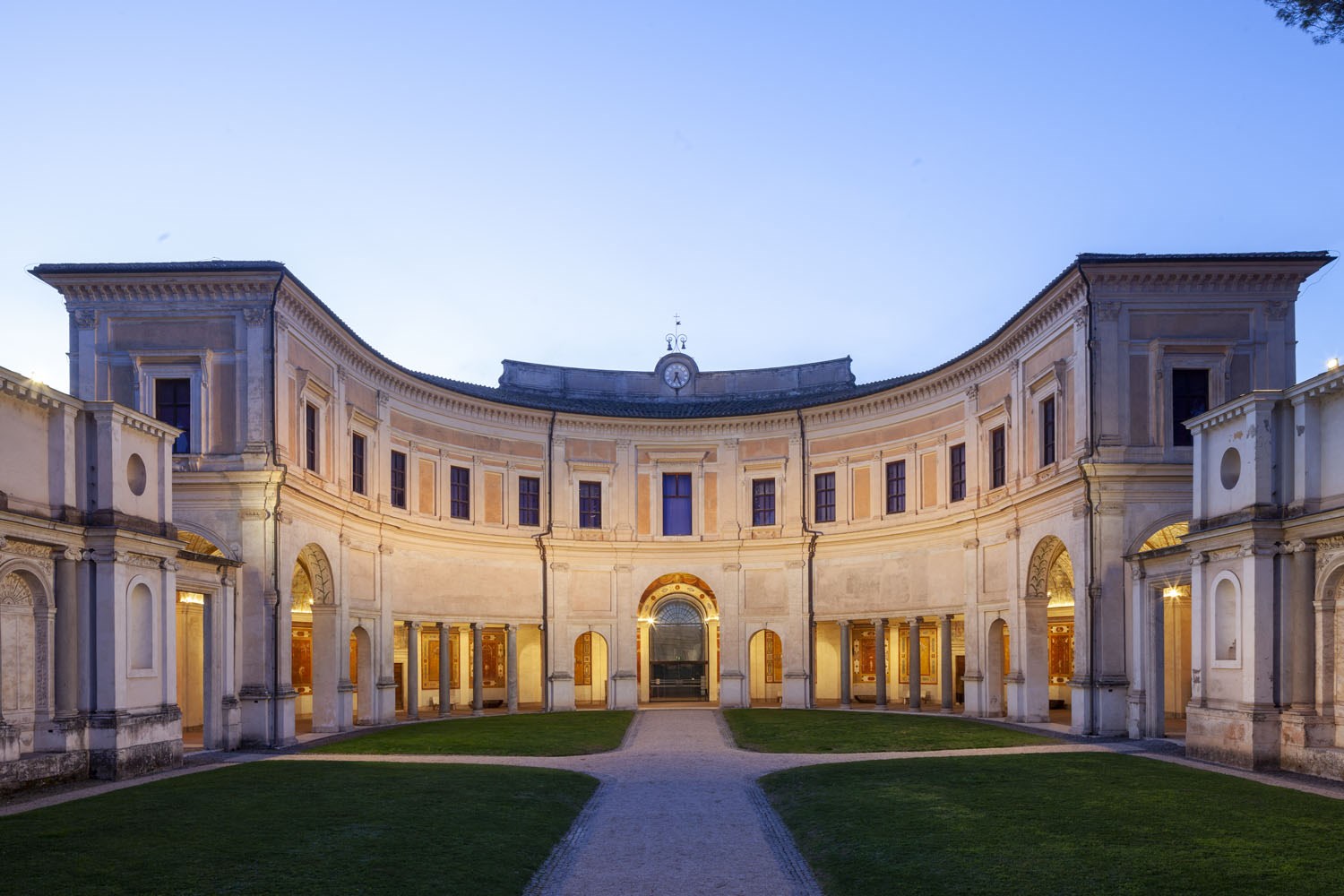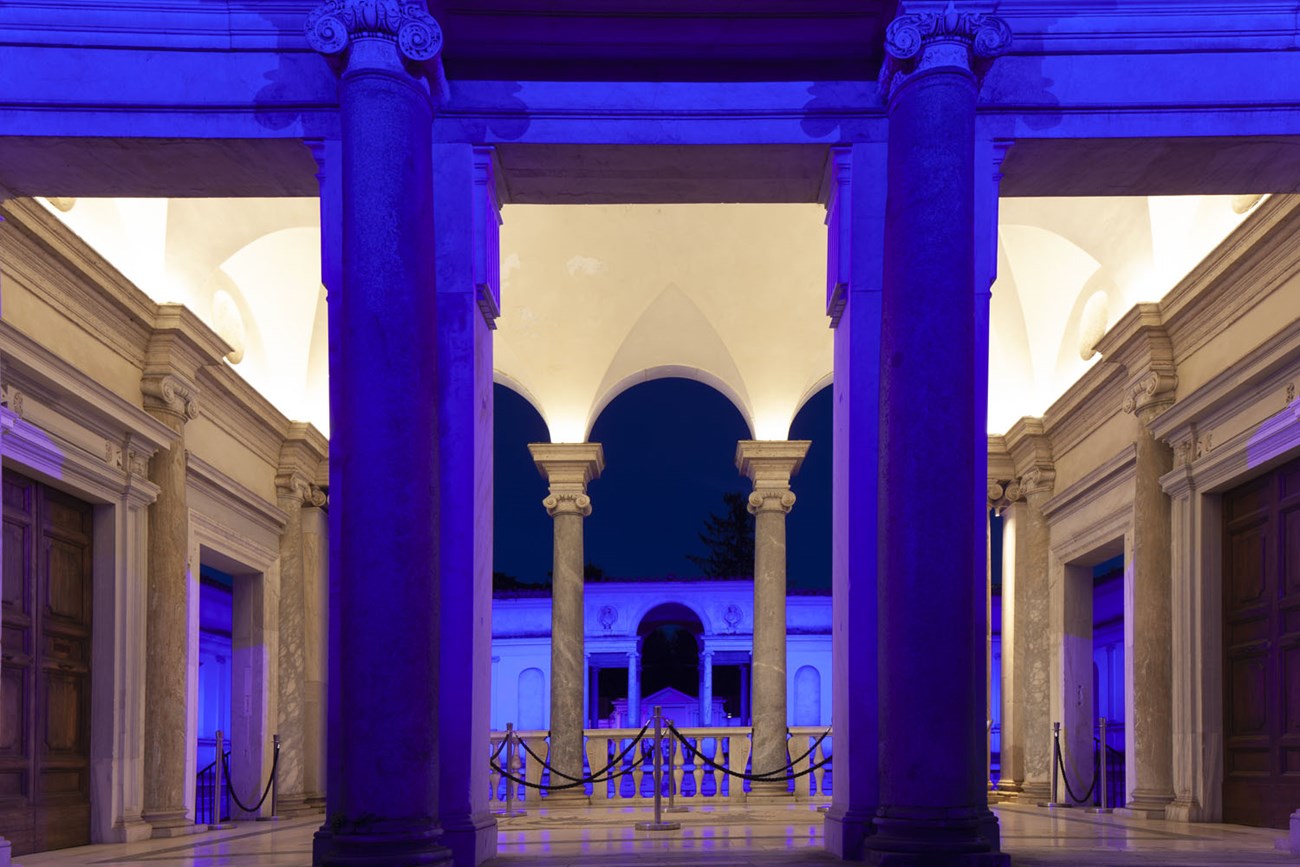Conceived by
ENEL X Architectural Lighting Team - an
ENEL Group company
that provides innovative products and services focused on energy transition -
the lighting design was meant to deliver coloured and white light flood light
effects with a perfectly smooth transition and uniform distribution to all the
walls overlooking the villa’s courtyard. Inscribed into an oval perimeter, the
villa’s geometry presents recurrent semicircular shaped elements in its
gardens, general structure, and decorative features. The most important of
these features, the main hemicycle, has been enhanced with the help of an array
of Capital 100 in RGBW colour configuration fitted with elliptical optics.
Owing to a perfect positioning and aiming, the chosen floodlights allow an
even, harmonious distribution of both coloured and white light on the surface
of the villa’s central body creating a deep visual and emotional impact.
The same architectural analogy is repeated in the Nymphaeum, where everything
combines to create charm and mystery, such as the four caryatids that support
the balcony and the beautiful Roman mosaic floor with Triton, also featuring a
semicircular shape. The upper levels of the Nymphaeum walls have been enhanced
by units of Capital 100 RGBW which deliver a magical atmosphere to this
enchanted place. The lower stage is illuminated by Micro-Clip MC in RGBW color
configuration, installed around the mosaic, which complete the wall wash
distribution. The overlapping effects produced by the silhouettes of arches and
porches of the loggia and Nympheum create a pleasant alternation of hues and
shapes with different depth and intensity, enhancing the artistic and
historical value of the villa in a superb way. To complete the lighting scheme,
some units of Capital 100 RGBW, installed on three sides of the square garden
located beyond the Nymphaeum, deliver a new character to the historical
fountain in red porphyry decorating its center.
All of the fixtures are controlled via a wireless DMX system using DMX
receivers and repeaters. Installed in strategical points of the villa’s outdoor
areas, they allow a seamless management of the whole lighting installation
without the need of a dedicated cable line.
Credits:
Client: ETRUSCAN MUSEUM OF VILLA GIULIA, ROME
Lighting design: Enel X Architectural Lighting Team
Pictures: Luca Cioci
Products installed;
20x CAPITAL 100 RGBW ELLIPTICAL OPTICS
2x CAPITAL 100 RGBW ELLIPTICAL WIDE OPTICS
2x CAPITAL 100 RGBW WIDE OPTICS
6x MINI WATERLED MK3 RGBW NARROW OPTICS
2x MINI WATERLED MK3 RGBW MEDIUM OPTICS
2x JUPITER RGBW ELLIPTICAL OPTICS
2x JUPITER RGBW SPOT OPTICS
3x MICRO CLIP MC WIDE OPTICS
9x MICRO CLIP MC MEDIUM OPTICS
1x WALL TSC
7x WIRELESS DMX RECEIVER
1x INFRARED REMOTE CONTROL
2x IP65 2WAY DMX SPLITTER
2x
IP65 WIRELESS DMX REPEATER

